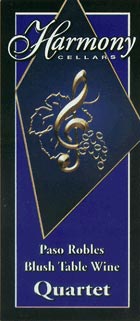 |
|
Wine Details
Price:
$7.95 per bottle
Description:
This wine is light and fruity. A combination of four varietals: chenin blanc, white riesling, muscat canelli and a splash of zinfandel. Also available as our Christmas Blush from September to December.
|
|
|